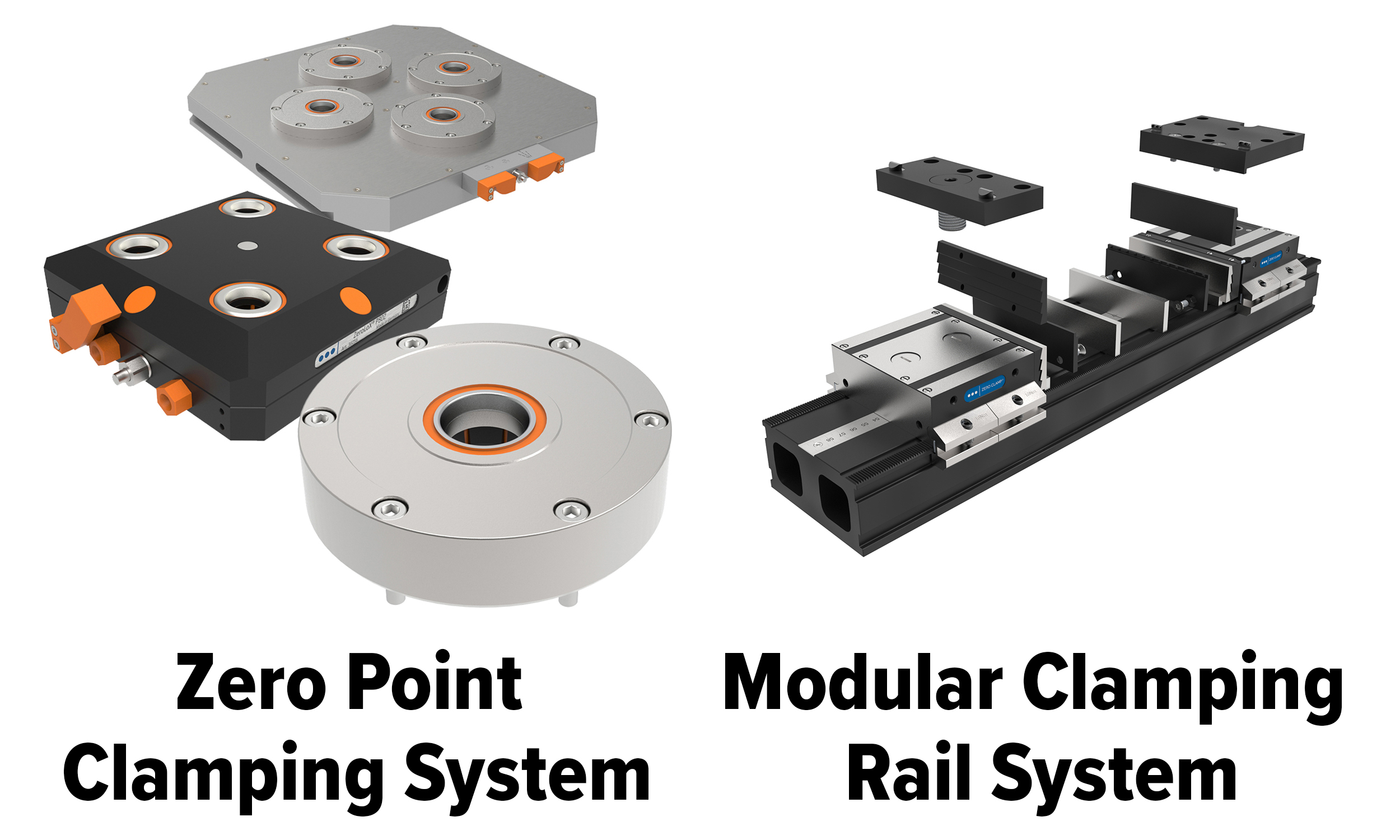Lyndex-Nikken partners with Zero Clamp GmbH
Lyndex-Nikken partners with Zero Clamp GmbH
Lyndex-Nikken, manufacturer and provider of high-performance machine tool accessories and automation, announces a partnership with Zero Clamp GmbH to offer high-quality German engineered clamping solutions to manufacturers in North America.

Lyndex-Nikken, manufacturer and provider of high-performance machine tool accessories and automation, announces a partnership with Zero Clamp GmbH to offer high-quality German engineered clamping solutions to manufacturers in North America. The Zero Point clamping system and modular clamping rail system enables manufacturers to minimize set up and changeover times.
Traditional setup of a workpiece on a CNC machine tool can be time consuming which lowers spindle utilization thus lowering profitability. Zero Clamp quality workholding is designed for precision and high repeatability. These attributes, combined with a quick change system, helps manufacturers create a lean process with setup reduction, workflows, and agility across many applications.
The Zero Point clamping system is a modern alternative to the conventional T-slot table. Since only one clamping stud is required, set-up times are drastically reduced and machine capacity is increased. Utilizing a pneumatic system, only 87 psi air pressure is required to release the clamping stud. So, the Zero Point clamping system can be used in any machine shop and is ideal for manufacturers performing milling, turning, spark erosion, and quality assurance applications.
The Zero Point clamping system operates on the same principle as an HSK tool arbor taper. The resilience of the interface ensures zero radial play, together with the axial position relative to the axial face. So, repetition accuracy is < 2.5 µm.
With simple assembly and few components, the Zero Point clamping system has high repeat accuracy. Maximum flexibility and process reliability are guaranteed throughout the entire production process resulting in high clamping force with maximum accuracy.
Benefits of using the Zero Point clamping system include:
· High Accuracy – clearance-free fit enables repeat accuracy of less than 2.5 µm
· Simple Design – only one type of clamping stud required
· Thermal Symmetry – due to a fixed zero point in the center of the table
· No Self Locking – in the event of a machine crash, the clamping device yields to prevent spindle damage
· No Tilting – uncomplicated insertion and removal
· One System for Multiple Processes – milling, turning, spark erosion, and quality assurance
Versatile clamping pots from 3.5 to 7.5 inches with a clamping force of 12.5 to 60 kN are available for standard applications to automation. Additional variants with position monitoring function and air coupling are available for automated operation. All clamping pots are available with indexing holes (anti-twist device for single use).
The modular clamping rail system is an alternative to conventional vices for flexible use on the machine tool. The SL080 and SL120 modular clamping rail systems have a clamping force of 20 kN or 40 kN and enable safe operation even in heavy-duty machining processes. All clamping widths are possible due to clamping rails which can be coupled together infinitely with a high pairing accuracy of 0.001".
With a lower height of 50% less as compared to conventional vices, the modular clamping rail system has maximum utilization of the Z travel distance. Additionally, a 70% reduction in weight compared to conventional vices makes them more user-friendly due to their low weight.
Benefits of using the modular clamping rail system include:
· Flexibility - clamping rails are fastened to the Zero Point clamping system by simply screwing in the clamping studs or by using side clamps the system can be fastened directly to the machine table
· Suitable for Small and Large Workpieces – due to modular clamping widths, clamping rails can be couples together infinitely
· Multiple Clamping – single and multiple clamping possibilities (flexible fixed jaws) in a .079" grid
· Unique Clamping Possibilities – clamping complex workpieces via rotating clamping rails (10.24")
· Modular Design – large variety of clamping jaws and direct fitting on the Zero Point clamping system
Additionally, a comprehensive range of clamping accessories enables accurate clamping of blank and finished parts according to the contours of the part.





